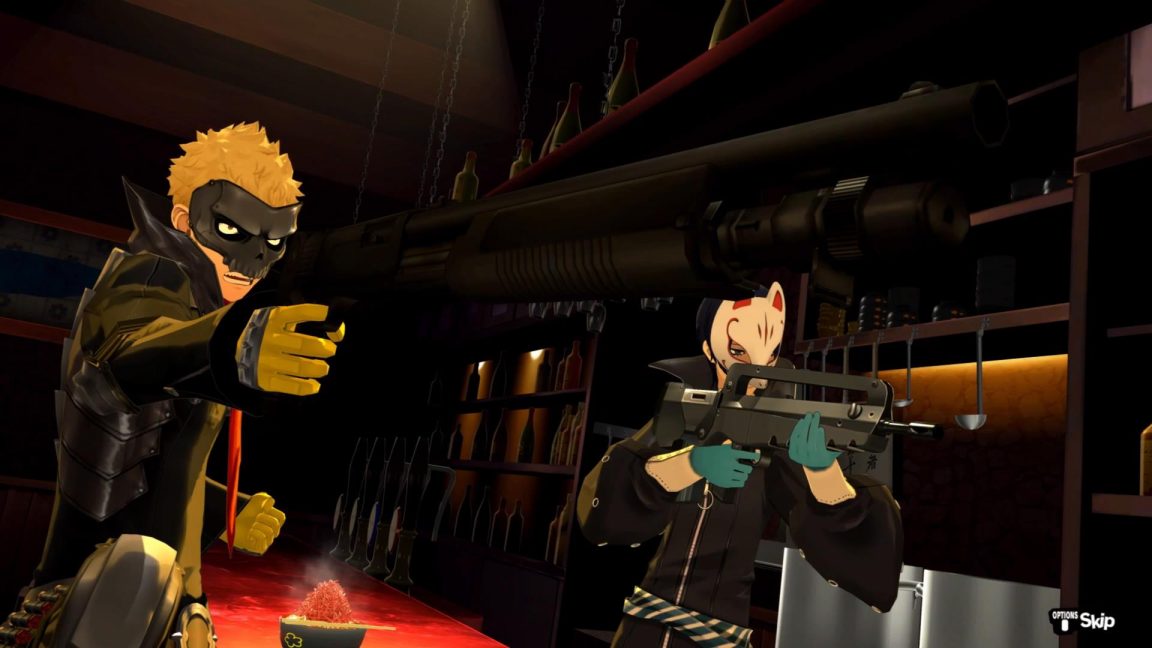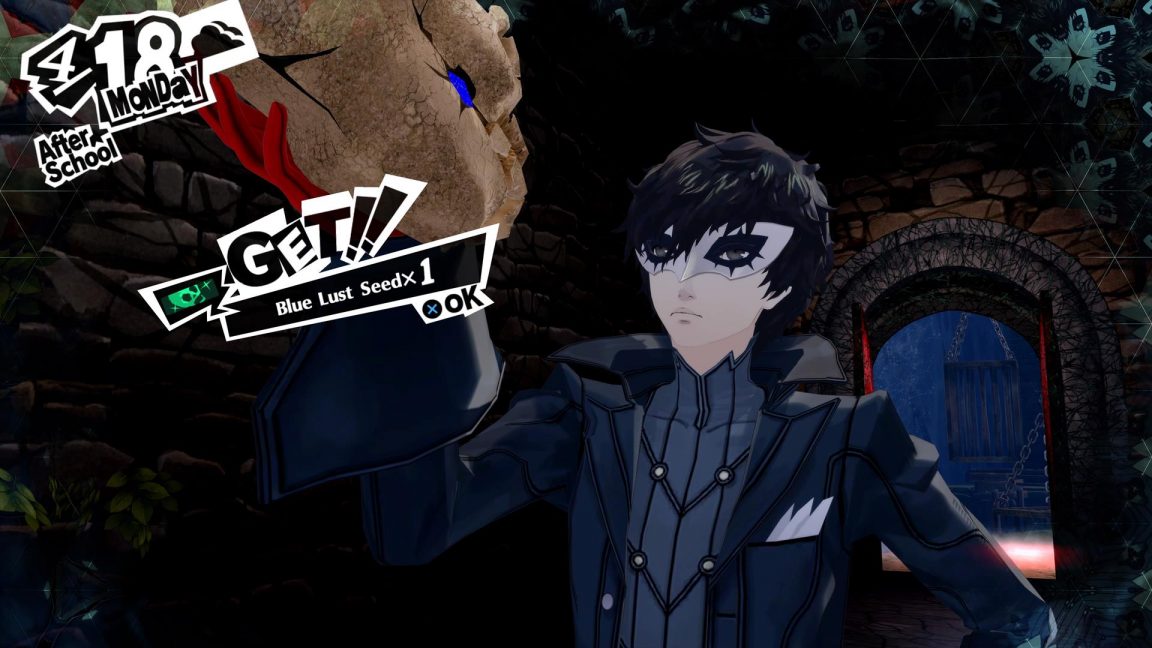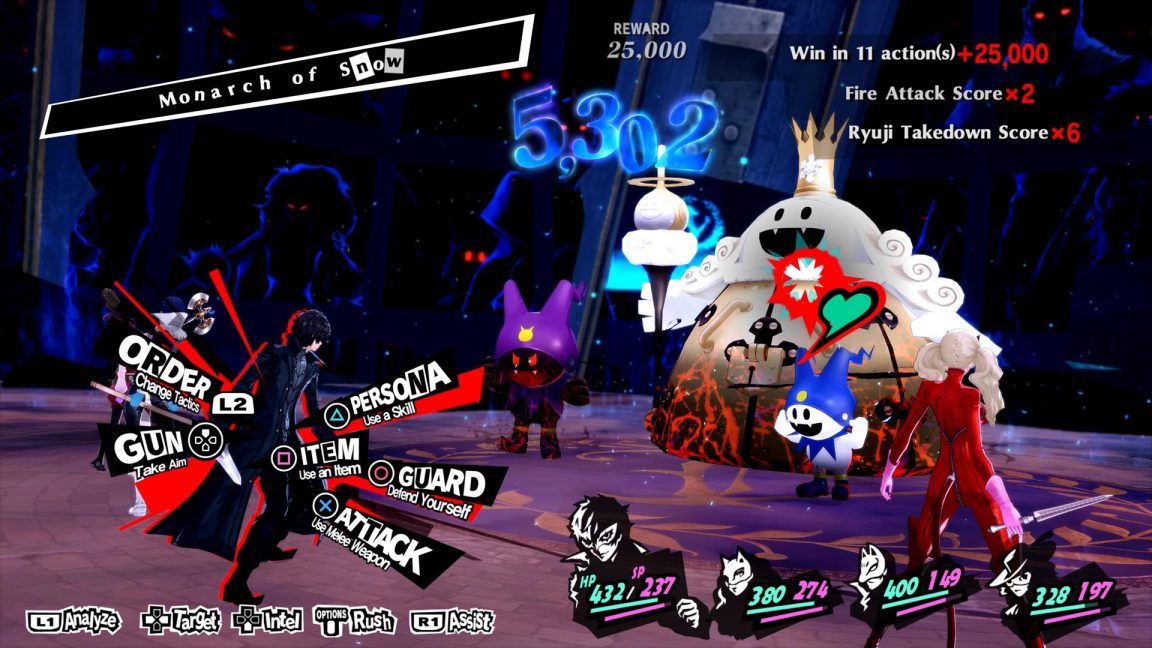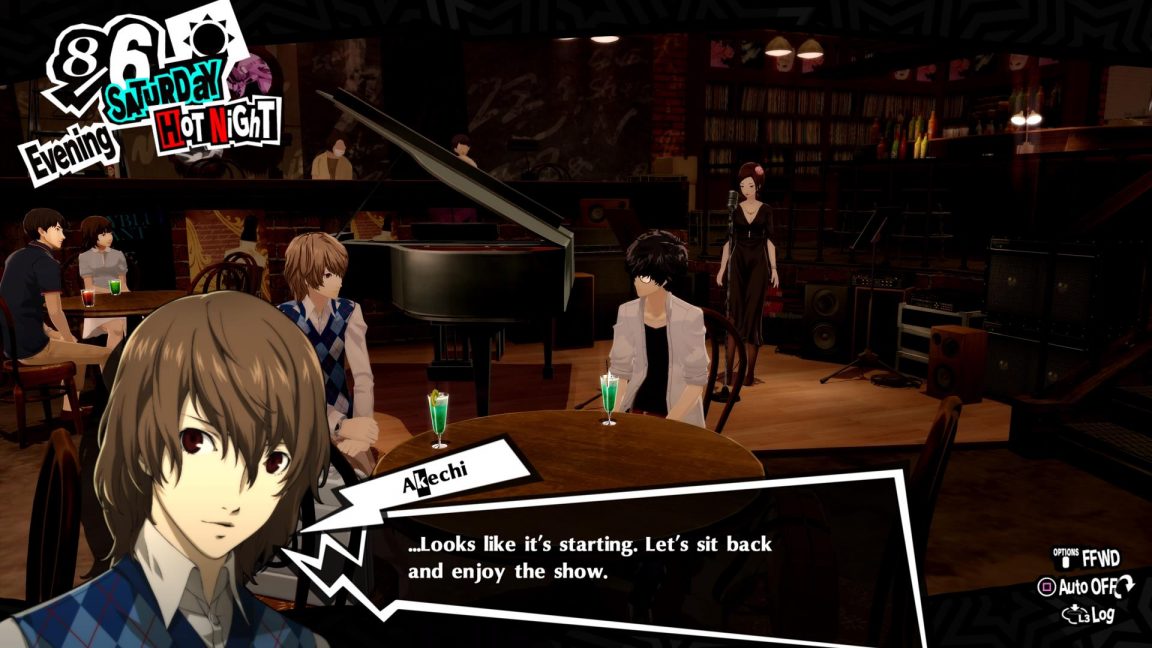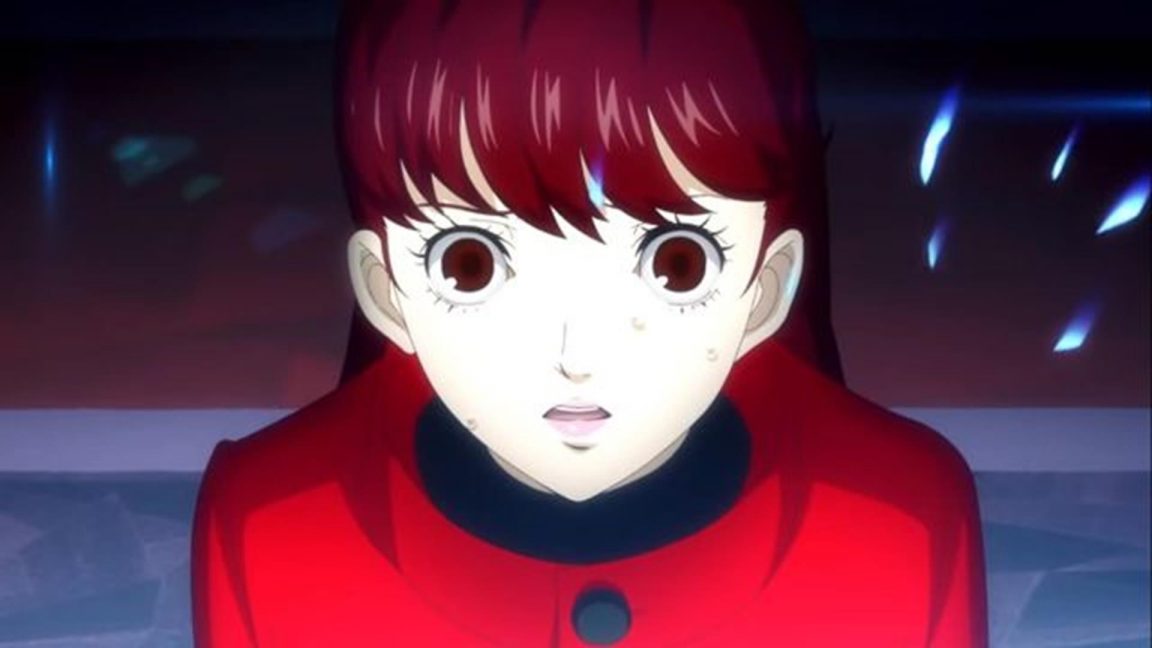If you’ve already experienced the story of the Phantom Thieves’ quest to steal the hearts of corrupt society, you’re probably itching to get straight to the new content, the bulk of it being at the very end. However, what you’ll also find is that Persona 5 Royal gives a deluxe rework all over the whole game, with a huge number of changes, some big, some small, which ultimately make another playthrough a refreshing one. While this isn’t a completely exhaustive list, here’s what’s a rundown of changes in Persona 5 Royal.
Localization overhaul
The original Persona 5 had some glaring and stilted localization issues, no doubt as a result of a rush to translate the dialogue-heavy game in time for the Western release just six months later. But with Persona 5 Royal, it seems the localization team at Atlus USA have had the time to give the original translation another pass, even re-recording voice lines where necessary. Just check out the below excerpt from Morgana early on in the game, originally translated as “It means they’re holding nothing back and are serious to kill us”.
It should be noted that I’ve been playing Persona 5 Royal with Japanese audio (dual audio is available by default this time whereas you had to download free DLC in the first game at launch) so I’ve also noticed when characters utter that frequently used phrase “仕方がない / Shikata ga nai”, it’s not simply translated literally as “it can’t be helped”. Even better news for European audiences is that Persona 5 Royal is the first title in the series to support French, Italian, German and Spanish text and subtitles. This is incidentally set according to your PS4’s language settings rather than an option you toggle in the game’s config screen.
Rewritten dialogue for gay NPCs
One of the biggest localization changes is from the two gay characters you first encounter when you visit Shinjuku for the first time. Whereas the original dialogue had them accosting a mortified Ryuji, “>playing up to a homophobic stereotype of predatory gay men preying on highschoolers in a seedy part of town, the context of this scene has changed entirely. For starters, ‘Scruffy Romantic’ and ‘Beefy Trendsetter’ actually have names, Angel and Julian (or Julie), and the comedy of the scene is now played more at Ryuji’s expense rather than them. As you’re visiting the Crossroads bar run by cross-dressing owner Lala-chan, Angel and Julian mistake Ryuji as someone interested in getting into drag. So rather than hitting on him, they whisk him off for the RuPaul treatment. It’s a gag that continues when you run into them again in a later scene at the beach. It’s far from a perfect solution (their caricatured effeminate appearances remain unchanged) but it’s arguably an improvement over the original homophobic scene, Atlus USA getting creative and managing to recontextualise the scene with the same number of dialogue boxes and animations.
Smoother and more stylish battles
To make the most of exploiting enemy weaknesses with the one more mechanic, you can now Baton Pass between party members immediately instead of having to unlock it through Confidant rankings. While Baton Passes boost attack and recovery powers with each pass, they can also be levelled up so that characters recover a bit of HP and SP. Gun ammo is now also automatically refilled at the start of each battle, meaning you no longer have to waste money and resources on more ammo, making gun skills a more viable tactic for Palace runs.
If the ‘All Out Attack’ finisher portraits weren’t already incredibly stylish (Futaba also gets in on the action from time to time), there’s also all-new Showtime attacks, ridiculously OTT specials activated by a pair of party members. These trigger at random, though usually when an enemy such as a boss is near death. These unlock during the story, which also includes a nice bit of interaction between the relevant characters, adding an extra touch of bonding between team mates not strictly tied to your protagonist. One note of warning is that once a Showtime is active, you have to use it that turn or lose it. It also only targets one enemy so isn’t as effective if you’re trying to damage multiple targets. You’ll also occasionally run into glowing ‘disaster’ shadows that automatically counter if you attack them. However, if you know their weakness, it’s worth focusing your attacks on them because they’ll explode, leaving behind bonus items and damaging other enemies enough to wipe them out if your attack’s especially powerful. You won’t want to destroy shadows straight away though as you’ll still have to speak to shadows if you want to recruit them as a persona. Negotiations are fortunately also easier this time round as Morgana will provide hints on the right responses to make.
Palaces are still long, but…
Joker has a new grappling hook to traverse the Palaces and you get pretty clear visual and audio cues indicating there’s a point nearby you can grapple. These are however just fixed points, so you can’t use it nearly as freely as you think. And despite one instance in Kamoshida’s Palace, you can’t really use the grapple to zip through Palaces faster, they still take a few hours to navigate. Rather, it mostly allows for slight revised layouts for Palaces, including new routes to explore.
Some of these new routes lead to Will Seeds, a new collectible that restores some of the party’s SP, giving you slightly more resources to get through a Palace in just one trip. Each Palace has three Will Seeds, the third always guarded by a tougher enemy, while collecting all three will net you an accessory with bonus powers.
Bosses have also been tweaked with at least one new twist, usually during the second phase of the fight. They’re often tied to the theme of the character’s distortion, such as how Madarame produces fake copies of himself or how Okumara is assisted by an unquestioning robot version of Haru. Kamoshida’s fight, however, will earn some raised eyebrows. As he views his students as slaves, he summons cognitive versions of Mishima and Shiho to help him, the latter dressed in a sexy bunny outfit. Given that Shiho is a victim of sexual abuse, which results in her attempting suicide, this addition feels in poor taste, not helped by the fact your party also have to beat up this cognitive version of her to progress.
Mementos Moreish
The huge procedural generated Mementos has also been given a revamp. In a nod to Persona 3’s Tartarus, the music gradually evolves the deeper you progress so you’re not stuck hearing the same tune over and over. The game has plenty of new music elsewhere too, notably a brassy battle theme if you manage to ambush an enemy. You didn’t see that coming.
You can also collect flowers, which are well sought after by new character Jose, a mysterious being taking the form of a boy who drives around Mementos. He randomly appears on floors where he sets up shop to sell you special items (including any Will Seeds you missed from past Palaces) in exchange for flowers.
You can also collect stamps, usually found at the end of each floor of Mementos though more are hidden around the map. Give enough to Jose and he can even alter the state of Mementos, such as increasing item drop rates, money earned, or increasing your XP, which makes levelling up a whole lot easier in the end game.
More Velvet Room antics
Besides fusing and strengthening personas, you’ll have even more reason to visit the Velvet Room. You can take part in challenge battles that pit you against different waves of shadows, with more points scored and rewards gained depending on how you exploit enemy weaknesses and Baton Pass between party members. These challenges steadily unlock as you level up, and include ones where you face off against past protagonists in the series. When it comes to fusing personas, you can also run into Alarm Fusions, a status that triggers after finishing a battle. When you visit the Velvet Room at these times, you have a higher chance to unlock more powerful abilities and bonuses during fusion as well as a higher chance of accidental fusions that, as the name implies, lead to unpredictable results.
Much like Elizabeth in Persona 3, you can also take twin wardens Justine and Caroline out to the real world. This amusing scenes are separate from their Strength Arcana arc, which still consists of persona fusion requests.
Thieves Den
As a complete optional aside, there’s also the Thieves Den, basically a big interactive gallery where you can chill out and display collectible items, listen to the game’s excellent soundtrack, play back animated cutscenes or even unlock performance clips from the Persona Live concerts. While it’s purely cosmetic, you can even change your appearance to another character.
And just for the hell of it, there’s also a card game you can play with your team mates called Tycoon, which is basically just a version of President (based on the Japanese card game Daifugō) where the aim is to get rid of all your cards. Don’t go expecting Gwent but it’s a good bit of fun to pass the time.
New places to hang out
Socialising is of course a fundamental part of Persona, and Kichijoji is the latest place to do that. The largest explorable in-game hub, this trendy district is filled with snack bars and boutique stores. This includes a second clothes store where you can sell sooty armour from Palaces and Mementos, and earn tokens that can be exchanged for random clothing with often higher stats. There’s also a nearby temple where you can spend time meditating to further increase your SP or you can invite a pal in the evening to a jazz bar to relax with mocktails to increase both their level and Confidant points. On nights where there is a live singer, the effects are doubled. If you’re looking for a guide to confidant gifts and how to pick the best gifts, we’ve got you.
The highlight is probably the Penguin Bar where you can hang out with friends to play billiards or darts. The latter is a decent mini-game (based on Sega’s own interactive DartsLive machines in Japan, also seen in Yakuza) that makes clever use of the DualShock 4’s motion light bar. Playing with another team mate and beating the game also improves the effects of Baton Pass.
You can also unlock new hangout spots to invite Confidants to, including Shinagawa Aquarium and Nakano, the latter a popular shopping destination for anime and idol goods. Granted, these simply consist of a postcard backdrop but they all add to building up a bigger picture of Tokyo.
New characters
Persona 5 Royal adds two new key characters, each with their own Confidant arc: student gymnast Kasumi Yoshizawa and school counselor Dr. Takuto Maruki. You’re introduced to Kasumi at the start in a revised version of the prologue where she has already awakened to her persona. Of course, the prologue is also set nearer the end of the story, and her dialogue reveals she is not a member of the Phantom Thieves, so it’s actually not until much later that she’ll join you as a party member. Kasumi is open to romance, if that’s your bag. You’ll nonetheless make her acquaintance at Shujin Academy as early as April. Most of her scenes are inserted naturally throughout the main story, although the majority of these interactions are just between her and the protagonist. She is however already acquainted with student detective Goro Akechi, and seems to share his disapproval of the Phantom Thieves.
Her Confidant arc also quickly maxes out at Rank 5, though you can continue ranking it up in the third semester. Besides improving your max HP, one of the useful skills you get from her is being able to use your grapple hook to ambush enemies from afar. The dreamy-looking and endearingly clumsy Maruki is introduced about a month into the story after the school decides to offer support to its students who have been affected by the Kamoshida abuse. While he is there to offer guidance to students, he also has an interest in cognitive science, which brings a new context to the themes of changing hearts and cognitions. Spending time with Maruki as a Confidant also improves your max SP. Interestingly, you also get to see his interactions with your other team members as they meet with him for one-to-one sessions.
Be warned though that if you want to max out Maruki’s Confidant ranking, there is a time limit to this as he leaves the school in November, just shortly before the heist at Sae Nijima’s Palace.
Akechi’s new arc
Fans of Akechi will be pleased that his arc has also been given a complete overhaul. Whereas before his rank progressed through mandatory scenes like with Morgana’s arcana, you’ll now have to seek him out and actively spend time with him. While that means having to juggle another person in your busy social calendar, these new scenes are totally worthwhile, as you get to see new sides to Akechi’s backstory and personality. Unsurprisingly, they also make the most out of the Kikochiji location.
As anyone who’s played the first game will know, there’s also a deadline to ranking up his Confidant. However, you can only reach up to Level 8 by your own actions. After that, the remaining two are fulfilled during Shido’s Palace.
More efficient use of your free time
Maxing out both your Social Stats as well as all your Confidants still takes time, and pretty impossible for the latter on your first playthrough, but there are some welcome additions to help you better manage your time. As well as alerts from Confidants, your phone will also get messages from your part-time jobs when it’s the optimal time to help out to earn more money or better raise a Social Stat, such as how the 777 convenience store is busier when running a promotion on any date in the month with the number 7. Your interactions with Confidants also now follow up with a phone call when you’re on way back to Cafe Leblanc, which gives you another chance to improve your bonds.
Obviously, this isn’t the case for Sojiro. However, you have new ways to improve your bond with him by giving the cafe a good clean, which also raises your Kindness stat. You can even use the cafe toilet to reflect on your Social Stat progress. The most welcome relief is that Morgana no longer rushes you off to bed. Even if you’re usually tuckered out after a day fighting shadows in a Palace, while you can’t go out, you’ll at least be able to do stuff in the cafe, whether it’s studying, brewing coffee, crafting infiltration tools or playing video games and watching movies if you buy the CRT TV for your room. To that end, there’s even more books and games to buy, while the DVD rental shop in Shibuya is just a one-off annual service with no more late fees.
Well, okay, some evenings you’ll be told to go to bed. But I swear, they’re only a handful of times now.
The third semester (beware spoilers)
Persona 5 Royal’s main event, as it were, comes at the end of the game with a third semester that features a new Palace, another layer of Mementos, as well as where you’ll also have both Kasumi and Akechi in your party. If you’ve beaten Persona 5 before, some of the above won’t make a lot of sense, but that’s because there’s a twist to certain events. I’ll avoid spoiling precisely what these are but returning players will first notice an anomaly in a scene after the final battle on Christmas Eve, while you’ll notice even more unusual things happening at the beginning of the new year. Basically, after the battle against society and fate, the third semester’s arc subverts a lot of what had gone on before. Even the new endgame antagonist is a different mold from the twisted villainy of Kamoshida or Shido, though it brings a new angle on the idea of the cognitive world’s power. There’s even a new alternative ending, which isn’t necessarily a ‘bad’ ending, though you could arguably call it a ‘fake’ one. The important thing to note is that because Akechi, Kasumi and Maruki are essentially tied to this arc, maxing out their Confidant ranks is imperative to unlocking the third semester. Otherwise the game simply ends the same way as the original does, which isn’t something you’ll want to find out after 100 hours of play time. So make your choices count.



